In fact, level of consciousness is THE most basic and sensitive indicator of altered brain function If we have a patient who is awake and alert for the 0700 assessment, but becomes lethargic or somnolent as the day progresses, this tells us that something is most definitely NOT RIGHT!Jan 27, 21 · Two of the most commonly used tools for assessing the patient's level of consciousness is the ACVPU scale and the Glasgow Coma Scale (GCS) ACVPU is an acronym for "Alert, Confusion, Verbal, Pain, and Unresponsive" ACVPU is actually AVPU and sometimes this is still the used abbreviation in some literature but this has been updated to include the confusionMar 09, 19 · Among the major confounding factors for the assessment of consciousness in the ICU setting, the following take a central role sedation and delirium Determining the exact level of consciousness is usually not a major concern for the clinician treating deeply sedated patients (eg, those receiving treatment of refractory status epilepticus or

Nur 101 Basic Physical Assessment Workshop Neurological And Skin Assessment Slideshow And Powerpoint Viewer Mental Status And Level Of Consciousness Observe Level Of Consciousness State Of Wa
Level of consciousness assessment pdf
Level of consciousness assessment pdf-However, we have shown the importance of neurological assessment in identifying patients who might require escalation to a critical•Full Consciousness Alert, awake, responds appropriately to stimuli, follows commands •Confusion Disoriented, short attention span, agitated, restless, may have hallucinations •Lethargic Drowsy, delayed response to stimuli, slow in speech and mental process, & may drift off to sleep during exam Level of Consciousness 9
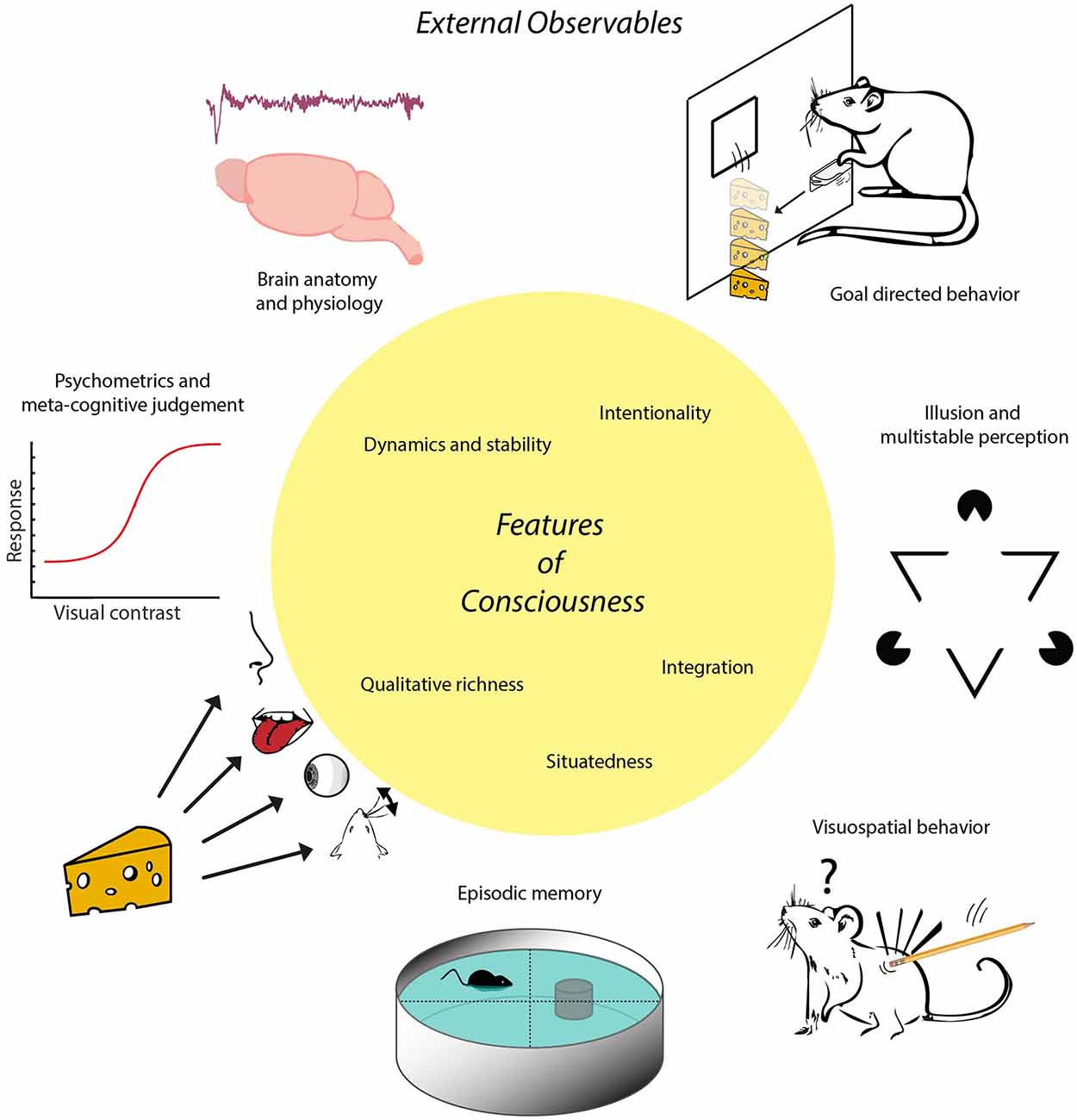


Frontiers Indicators And Criteria Of Consciousness In Animals And Intelligent Machines An Inside Out Approach Frontiers In Systems Neuroscience
The GCS should beNov 24, · Now, let's walk through each level of consciousness you may see (Please note, we're not talking about orientation or confusion levels here, just alertness level!) Awake and alert They awaken easily, and maintain that level of alertness throughout the interaction (this will probably be what you see the most)Aug 30, 17 · A neurological assessment involves thoroughly assessing a patient's level of consciousness, motor function and pupillary reaction The purpose of a neurological assessment is to detect abnormalities that may suggest brain injury, or disease The information obtained will help determine patient care needs and the necessity for medical
(04) Simple bedside assessment of level of consciousness comparison of two simple assessment scales with the Glasgow Coma scale Anaesthesia;That impair neurologic functioning may also improve arousal and level of consciousness 2c and 2d Assessment and Enhancement of Arousal Level B Clinicians should attempt to increase arousal before performing evaluations to assess level of consciousness any time diminished arousal is observed or suspectedSimple bedside assessment of level of consciousness comparison of two simple assessment scales with the Glasgow Coma scale Neurological assessment is an essential component of early warning scores used to identify seriously ill ward patients
Sep 27, 19 · Assessment of disorders of consciousness Standardized assessments should be used for serial assessment eg, Coma Recovery Scale– Revised (CRSR), looks at auditory, visual, motor, orometer/verbal, communication, arousal Signs of emerging consciousness Visual tracking, nonstereotypic motor responses, emotional responses Spaulding RehabilitationAssessment of Level of Consciousness A Stimulate with progressively stronger stimuli i) normal voice ii) shout iii) light touch iv) pain Observe patient's response (verbal or motor) If there is no response to voice or light touch, painful stimulus is needed to assess neurological status Central pain should be used firstApr 07, 16 · Assessment of consciousness 1 Assessment of consciousness Marwa Elhady lecturer of pediatrics Alazhar University 16 2 STIMULUS RESPONSE Assessment of level of consciousness start softly and then more loudly Level of consciousness is the most sensitive indicator of changes in the neurological state of the patient 3



Levels Of Consciousness Nursing Information Pharmacology Nursing Levels Of Consciousness



Levels Of Consciousness Neuro Assessment Youtube
Aug 03, · A quantitative assessment of consciousness is more likely to be used in clinical settings because it provides a more objective assessment of the patient's level of consciousness Glasgow Coma Scale ( GCS ) A common neurological scoring scale used for the evaluation of consciousness in acute settings (especially after head injury ) andOne of the simplest is the confusion assessment method CAMICU If the patient has an acute or fluctuating course, evidence of inattention and either disorganized thinking or an altered level of consciousness (elevated or decreased), they have a very high likelihood of having deliriumLevel of consciousness, general patient survey, and vital signs Level of consciousness Components of level of consciousness include Assess level of consciousness ;



Amazon In Buy Neurologic Assessment Diminished Level Of Consciousness Book Online At Low Prices In India Neurologic Assessment Diminished Level Of Consciousness Reviews Ratings



Words Used To Describe Level Of Consciousness Download Table
Jun 28, 08 · Each of the five examples includes an assessment of the central nervous system or level of consciousness, although the methods used are not identical 37 These scores have yet to be scientifically validated;Jul 08, 08 · Level of consciousness It is not possible to directly assess the level of consciousness it can only be assessed by observing the patient's behavioural response to different stimuli During the initial rapid assessment of the critically ill patient, it is helpful to use the AVPU scale, with an examination of the pupils;Level of consciousness (LOC) is a measurement of a person's arousability and responsiveness to stimuli from the environment A mildly depressed level of consciousness or alertness may be classed as lethargy;
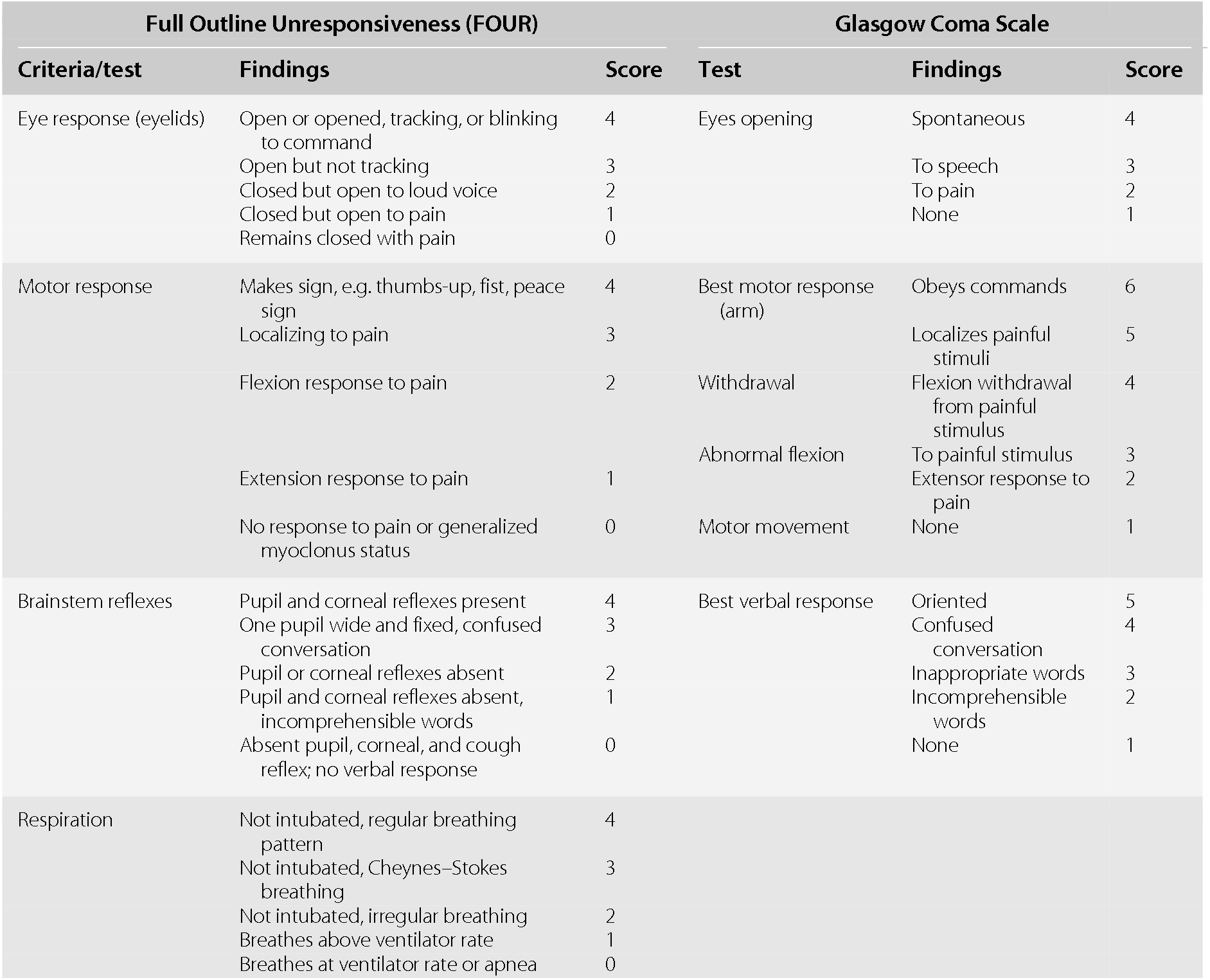


Alterations Of Level Of Consciousness Related To Stroke Chapter 24 The Behavioral And Cognitive Neurology Of Stroke
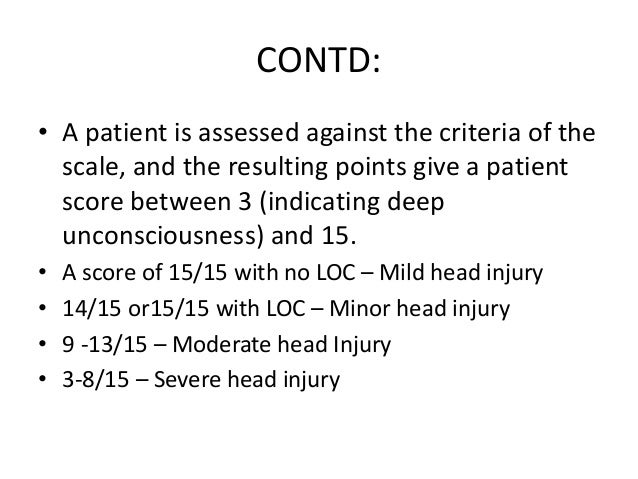


Level Of Consciousness Gcs
Jul 23, 18 · When documenting your patient's level of consciousness, you'll notice you have a LOT of options to choose from Your patient can be alert, confused, in a coma and anything in between Knowing the difference between each level of consciousness will help you chart accurately and communicate your patient's condition with precisionLevel of consciousness should also be assessed upon initial contact with your patient and continuously monitored for changes throughout your contact with the patientTeristics (educational level, years of experience, level of specialisation and work setting) and five for evaluation of the questionnaire The remaining questions (Supporting Information Appendix S1) were related to consciousness assessment where conditional logic ensured that participants would only receive the questions that would apply to
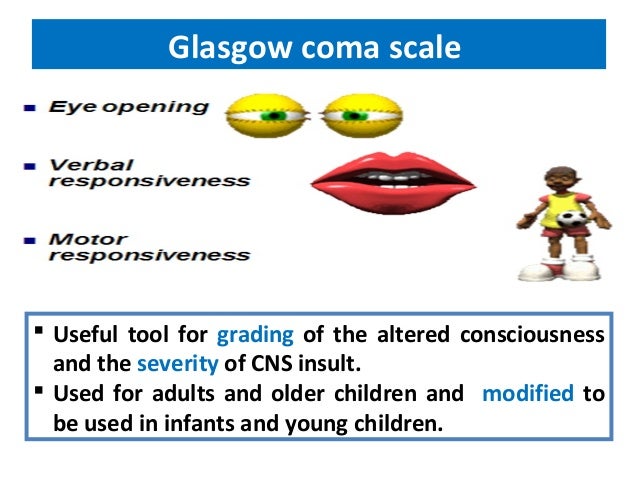


Assessment Of Consciousness



Levels Of Consciousness Assessment For Nurses Loc Youtube
Purpose assessment of patients with impaired level of consciousness The FOUR Score is a clinical grading scale designed for use by medical professionals in the assessment of patients with impaired level of consciousnessIt was developed by Dr Eelco FM Wijdicks and colleagues in Neurocritical care at the Mayo Clinic in Rochester, Minnesota2 the somewhat loosely defined states of awareness of and response to stimuli, generally considered an integral component of the assessment of an individual's neurologic status Levels of consciousness range from full consciousness (behavioral wakefulness, orientation as to time, place, and person, and a capacity to respond appropriately to stimuli) to deep coma (complete¾Review Neurological Assessment ¾Discuss the basic neuroanatomy and physiology ¾Describe the pathophysiology, management and nursing interventions of ¾Hydrocephalus ¾Cerebrovasculardisease ¾Meningitis ¾Seizures/status epilepticus ¾Head/Spinal Cord Injury ¾Neuromuscular Disorders Basic Neurologic Exam •Level of consciousness
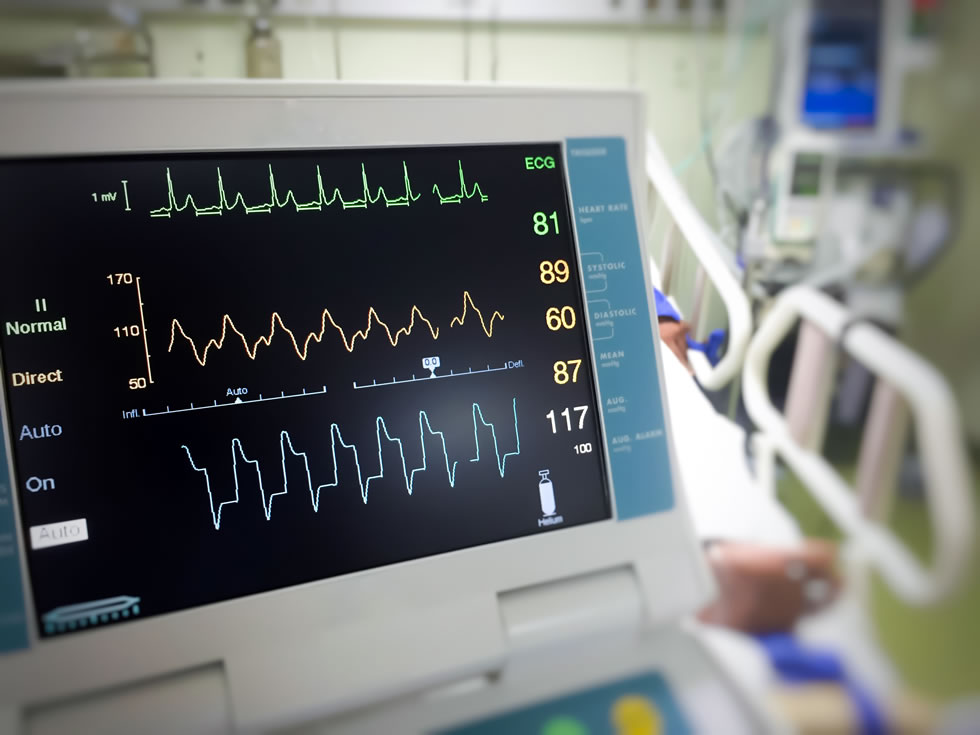


New Assessment Scale Offers Uniform Standards To Ascertain Level Of Consciousness



Decreased Level Of Consciousness In A Child Recognition And Management British Journal Of Nursing
1, 2 See the "General Survey Assessment" chapter for more information about an overall mental status assessment Level of Consciousness Level of consciousness refers to a patient's level of arousal and alertness 3 Assessing a patient's orientation to time, place, and person is a quick indicator of cognitive functioningThe technique of evaluation of the patient with an altered level of consciousness can be divided into three phases The first is to determine the level of consciousness itself Second is evaluation of the patient, searching carefully for hints as to the cause of the confusion or comaScale, comprised of 4 grades of consciousness, is the simplest and the fastest method for assessment of neurologic status (1,11) Nonetheless, its value has been limited by the broad range of definitions for each grade This prompted us to assessment of consciousness level



Chapter Neurological Assessment Neurological Assessment Rachel Palmer



Nur 101 Basic Physical Assessment Workshop Neurological And Skin Assessment Slideshow And Powerpoint Viewer Mental Status And Level Of Consciousness Observe Level Of Consciousness State Of Wa
The Glasgow Coma Scale is widely accepted as a measure of impaired consciousness both in clinical practice and in research In its standard form, the scale is inapplicable to infants and children below the age of 5 yearsJan 14, · In this lesson we're going to talk about the different levels of consciousness This, plus your pupillary assessment are going to be the staples of your neuro exam We'll talk more about the pupillary assessment in the routine neuro assessments lesson In order to understand the varying levels of consciousness, we need to know what normal isEverything has consciousness Humans have a wide range of consciousness We are fortunate as we can think and have willpower to choose and we can clearly, proactively raise our consciousness level And that is one of our main purposes in life to evolve and shift our consciousness to a higher level



Nursing Health Assessment Mnemonics Tips Nurseslabs



Observations Nursing Problem Assessing Level Of Consciousness Medical Health Information
Richer & Tell, 03) For the first four months, patient level of consciousness was assessed using coma or low functioning assessment scales, and for the ensuing year and a half, Addenbrooke's Cognitive ASSESSING LEVEL OF CONSCIOUSNESS IN VS 309Mar 27, 18 · Assess Level of Consciousness An individual's level of consciousness can deteriorate due to many different reasons, such as head injuries, increased intracranial pressure, haemorrhage, or lesions and tumours Determining the level of consciousness depends on the individual you are assessing and can be easy or difficultCONSCIOUSNESS ASSESSMENT Consciousness The state of being aware of physical events or mental concepts Conscious patients are awake and responsive to their surroundings Level of consciousness The degree of arousal and awareness A manifestation of altered consciousness implies an underlying brain dysfunction



14 List Component Of Primary Assessment 2 Explain Initial General Impression 3 List Level Of Consciousness 4 Discuss Abcs Airway Breathing Ppt Download



Pdf Advances In The Assessment Of Disorders Of Consciousness The Role Of Bedside Assessment And Neuroimaging Techniques In The Diagnostic Process Semantic Scholar
If you've ever wondered how to realistically tell the difference between the differing levels of consciousness (LOC) with your neuro patients, don't worry I'Oct 18, 09 · The single most important assessment Evaluation of level of consciousness (LOC) and mentation are the most important parts of the neuro exam A change in either is usually the first clue to a deteriorating condition The following terms are commonly used to describe a decreased LOC, so it helps to be familiar with them FullCheck out our Neuro Course at https//academyNURSINGcom/lesson/neuro0001courseintroduction/How to assess a patients level of consciousness as a nurse



Secondary Surveys Paramedic Study Guide Ultimate Study Guide For Paramedic Students



Levels Of Consciousness
Physical Assessment Level of Consciousness Glasgow coma scale is used to assess the level of consciousness 1 Eye opening Test and Score Spontaneous – 4 To speech – 3 To pain – 2 No response – 1 2 Verbal response Test and Score Oriented – 5 Confused – 4 Inappropriate words – 3 Incomprehensible sound – 2 No response – 1 3Evaluate level of orientation if the patient is alert Evaluate level of responsiveness if the patient is not alert Assess level of consciousnessRegistered users can save articles, searches, and manage email alerts All registration fields are required
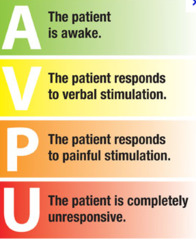


A Guide To Avpu For First Aiders First Aid For Free


Evolve The Organization By Measuring And Developing Its Consciousness Management Innovation Exchange
Someone in this state can be aroused with little difficultyMay 13, · AVPU is a straightforward scale that is useful to rapidly grade a patient's gross level of consciousness, responsiveness, or mental status It comes into play during prehospital care, emergency rooms, general hospital wards, and intensive care unit (ICU) settings The basis of the AVPU scale is on the following criterionMay 09, 17 · Definitions Neurological observations are those investigations and examination that relate to the assessment of the nervous system These commonly focus upon six key areas Level of consciousness Pupillary activity Motor function Sensory function FAST (stroke recognition) Vital signs One observation that is commonly part of a neurological assessment (although primarily



Frontiers Indicators And Criteria Of Consciousness In Animals And Intelligent Machines An Inside Out Approach Frontiers In Systems Neuroscience



Pin By Fabienne On Human Atlas Le Corps Humain Levels Of Consciousness Pediatrics Awareness
Simple bedside assessment of level of consciousness comparison of two simple assessment scales with the Glasgow Coma scale* A F McNarry1 and D R Goldhill2 1 Research Registrar, 2 Senior Lecturer and Honorary Consultant in Anaesthesia and Critical Care Medicine, DepartmentThe Glasgow Coma Scale (GCS) is widely used in acute settings to evaluate the level of consciousness Clinicians must be aware that although the GCS is very useful for some aspects of traumatic brain injury (TBI) care, it is not a valid diagnostic tool for prolonged disorders of consciousness (PDOC), and more sensitive and refined assessment is



Recommended Avpu Consciousness Level And Sedation State Download Table



Management Of Clients With Altered Level Of Consciousness



Emergency Care Chapter Interventions Neurological Assessment Emergency



Week 4 Intracranial Regulation And Level Of Consciousness
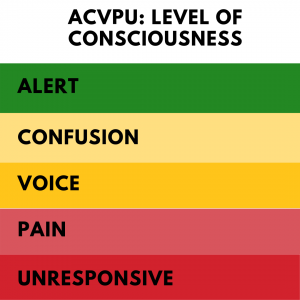


What Does Acvpu Stand For First Aid For Free



Documenting Levels Of Consciousness Nursing The Normal State Of Consciousness Comprises Either The State Of Wak Emergency Nursing Nursing School Survival Nurse


Paediatrics Altered Level Of Consciousness Glasgow Coma Scale
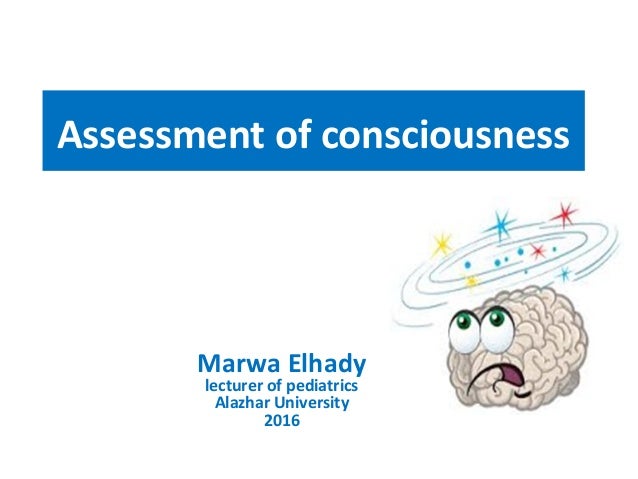


Assessment Of Consciousness



Medictests Com Quick Reference Level Of Consciousness Assessment For Adults And Peds Facebook



Levels Of Consciousness Neuro Assessment Youtube



Pdf Assessing Level Of Consciousness And Cognitive Changes From Vegetative State To Full Recovery



7 Levels Of Consciousness
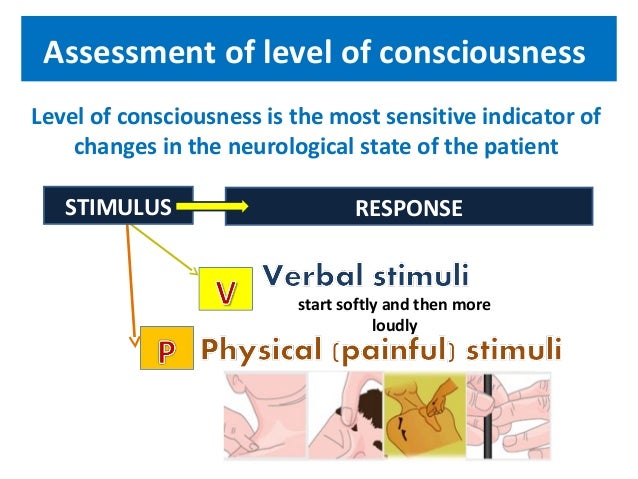


Assessment Of Consciousness



1 Neurological Assessment At The End Of This Self Study The Participant Will 1 Describe The Neuro Nursing Assessment 2 List 5 Abnormal Findings In A Neuro Ppt Download
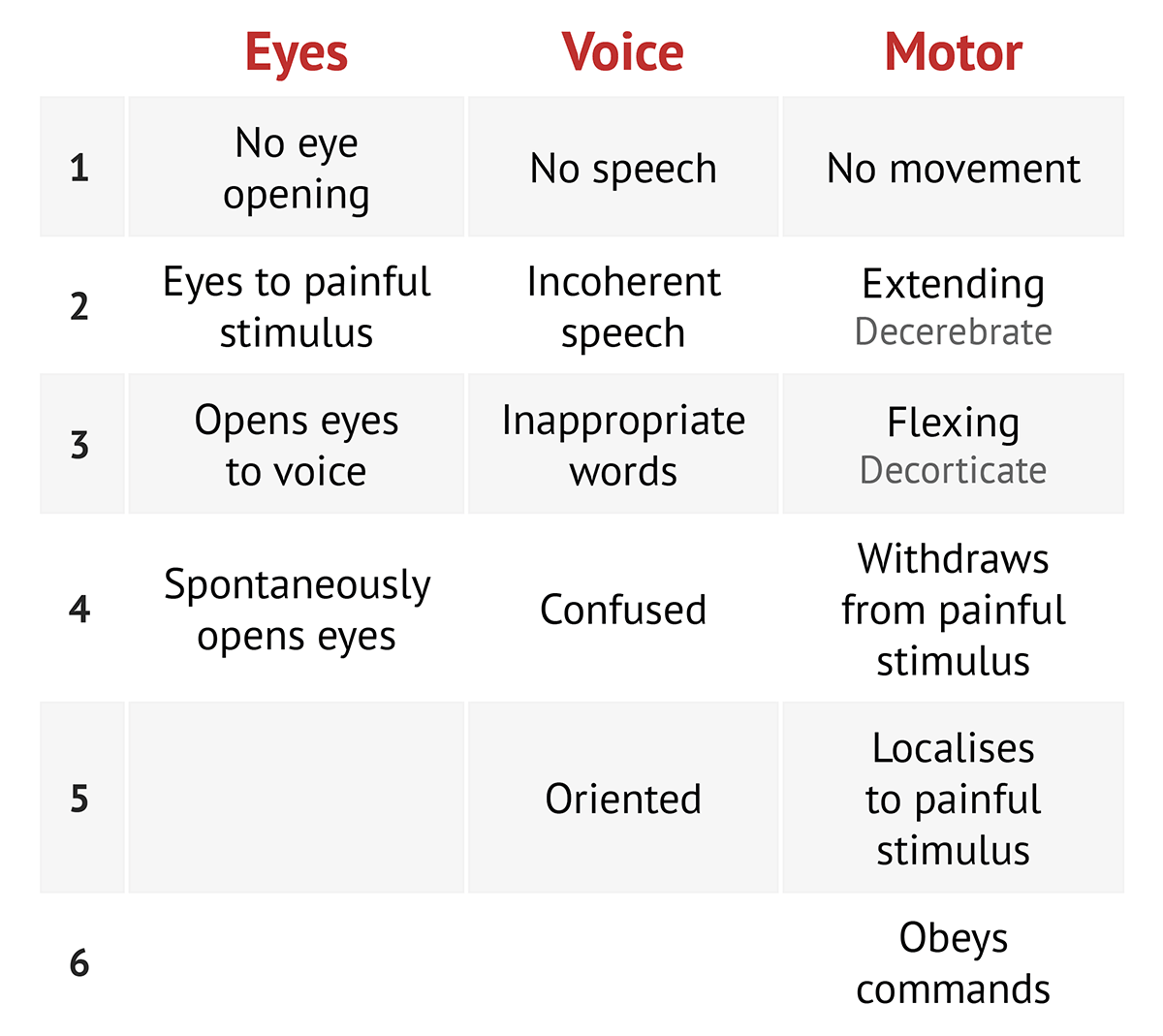


Level Of Consciousness Cranial Nerves Medschool



Ingenius Level Of Consciousness Assessment Avpu The Facebook



Rass Scale For Level Of Consciousness Levels Of Consciousness Tech Company Logos Resources



Recommended Avpu Consciousness Level And Sedation State Download Table
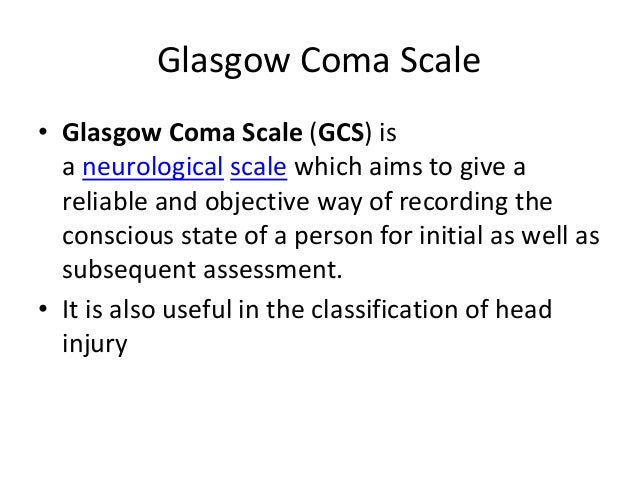


Level Of Consciousness Gcs



Altered Level Of Consciousness For The Emt Lecture Youtube



Words Used To Describe Level Of Consciousness Download Table
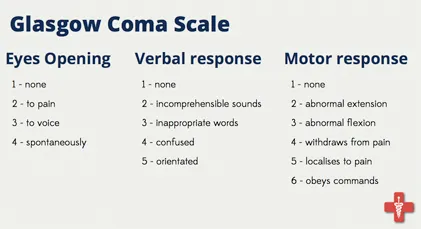


Understanding The Glasgow Coma Scale Swope Rodante P A



Altered Level Of Consciousness Pathophysiology And Management Anesthesia Key



Figure 1 From A Comparison Of The Full Outline Of Unresponsiveness Four And Glasgow Coma Scale Gcs Scores In Predicting Mortality Among Patients With Reduced Level Of Consciousness In Uganda Semantic Scholar



Practice Guideline Update Recommendations Summary Disorders Of Consciousness Report Of The Guideline Development Dissemination And Implementation Subcommittee Of The American Academy Of Neurology The American Congress Of Rehabilitation Medicine



Assessing The Conscious Level In Infants And Young Children A Paediatric Version Of The Glasgow Coma Scale Semantic Scholar



Recommended Avpu Consciousness Level And Sedation State Download Table
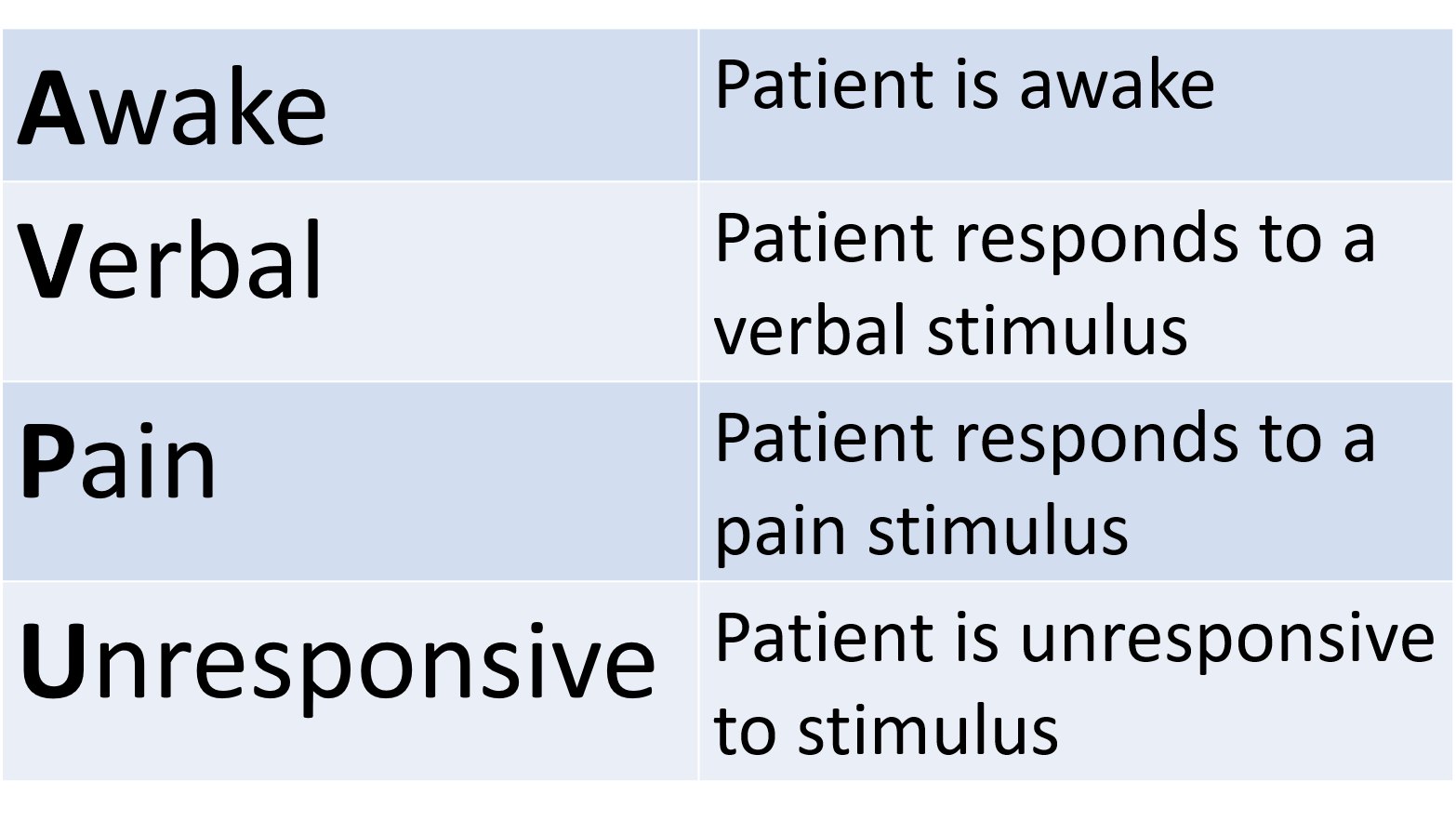


How To Use Avpu To Check Level Of Consciousness



Level Of Consciousness Gcs



Decreased Level Of Consciousness In A Child Recognition And Management British Journal Of Nursing
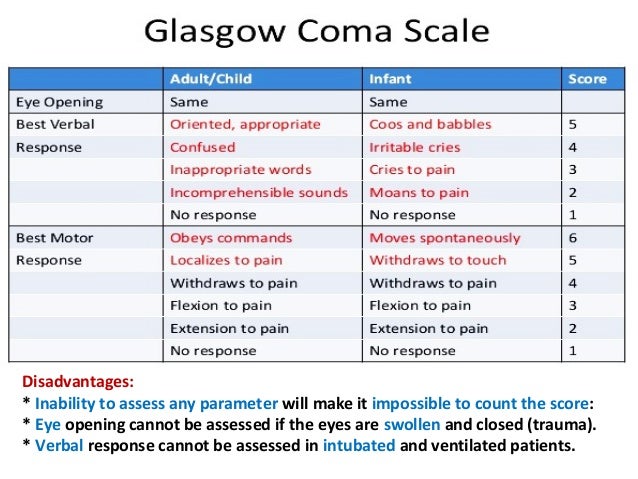


Assessment Of Consciousness


Coma Scales A Historical Review



1 5 Assessing Level Of Consciousness Taking Vital Signs
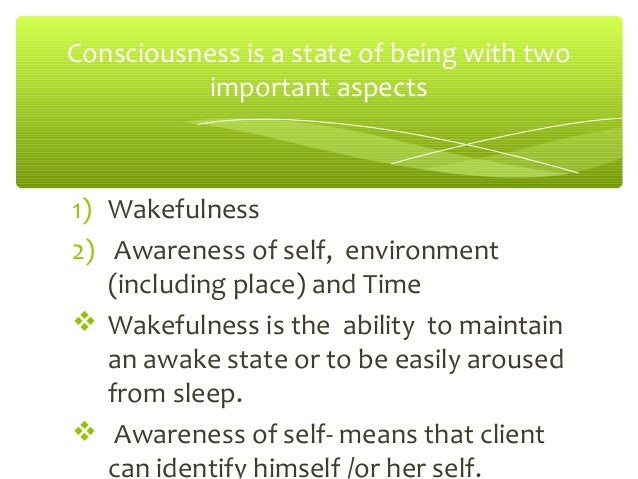


Management Of Clients With Altered Level Of Consciousness



Chapter Neurological Assessment Neurological Assessment Rachel Palmer
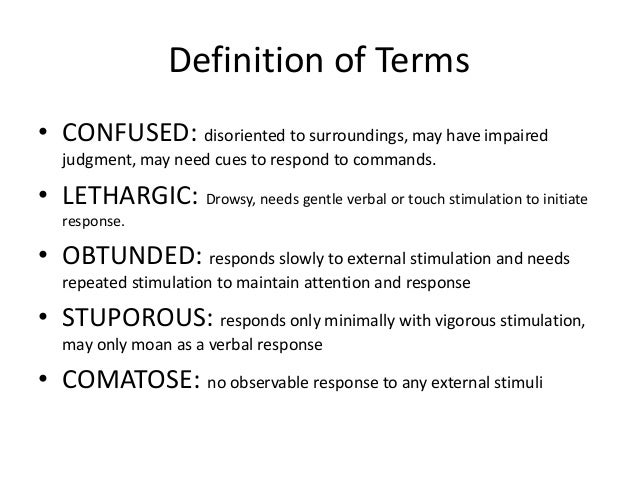


Level Of Consciousness Gcs



Nvs Coma Animal Anatomy



Pdf The Glasgow Coma Scale A Breakthrough In The Assessment Of The Level Of Consciousness



Neurological Assessment 1 Assessing Level Of Consciousness Nursing Times
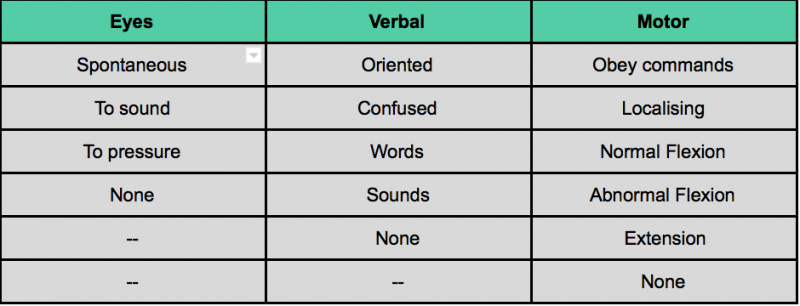


Glasgow Coma Scale Physiopedia



Seven Levels Of Leadership Consciousness



Assessment Of Consciousness
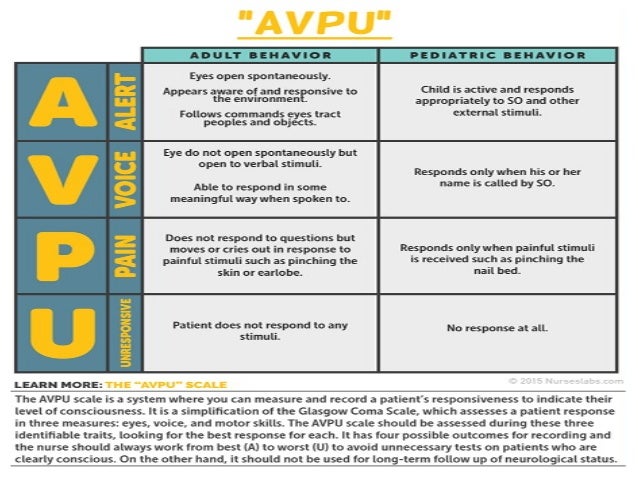


Assessment Of Consciousness
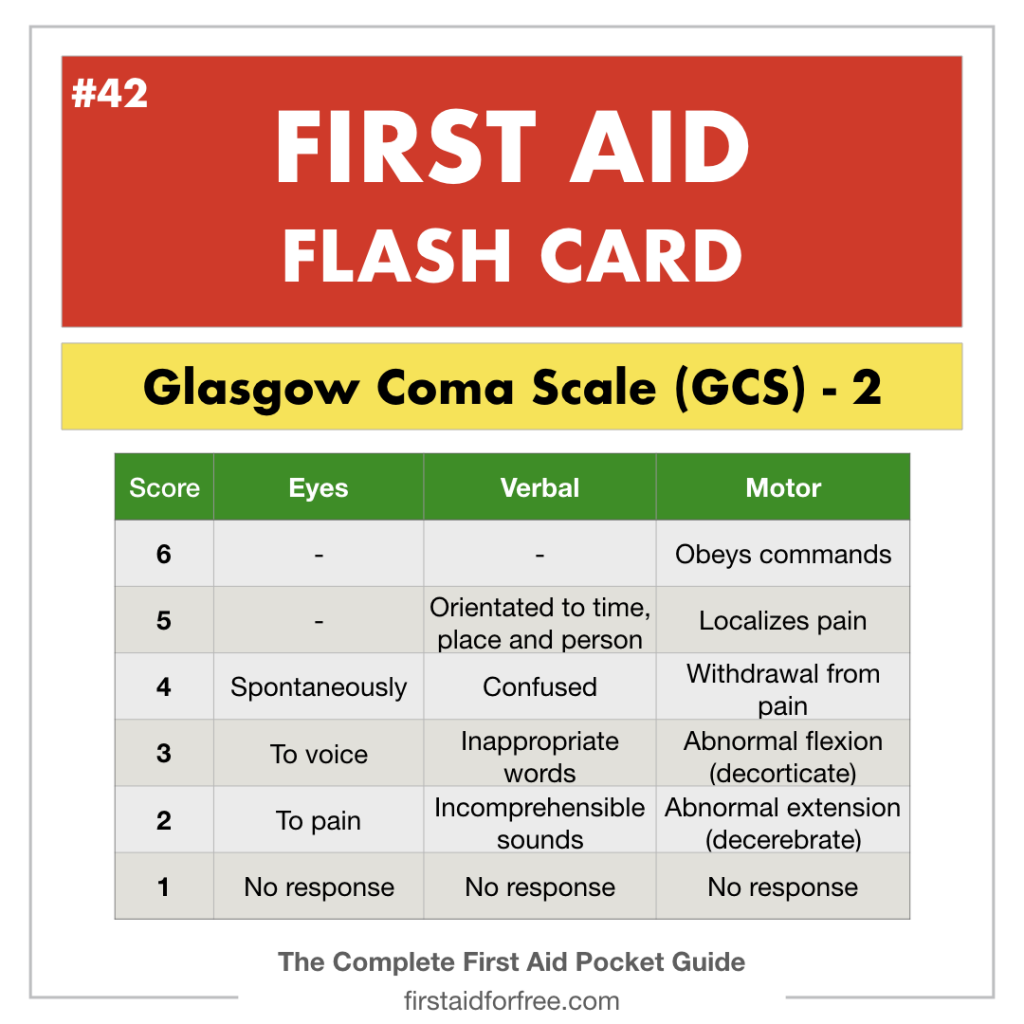


The Glasgow Coma Scale Gcs For First Aiders First Aid For Free



Neurological System Assessment Pyramid Points Risk Factors Associated



1 Levels Of Consciousness Assessment Of Levels Of Consciousnessincludes Following Categories Levels Of Consciousness Neurological Assessment Medical Knowledge



Consciousness Assessment Hackmd


Disability For Primary Survey



Glasgow Coma Scale Medictests
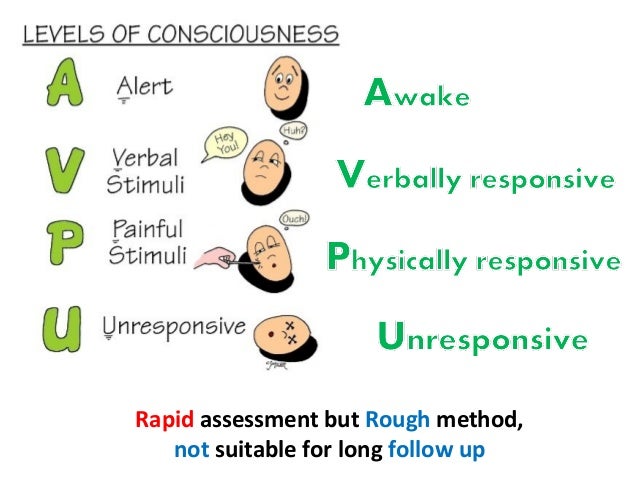


Assessment Of Consciousness



Investigating Factors That Have An Impact On Nurses Performance Of Patients Conscious Level Assessment A Systematic Review Semantic Scholar



Neurological Assessment Level Of Consciousness



Assessment Of Level Of Consciousness Following Severe Neurological Insult In Journal Of Neurosurgery Volume 60 Issue 5 1984



Dr M A Sofi Md Frcp London Frcpedin Frcsedin Al Maarefa College Of Science Technology Ppt Download
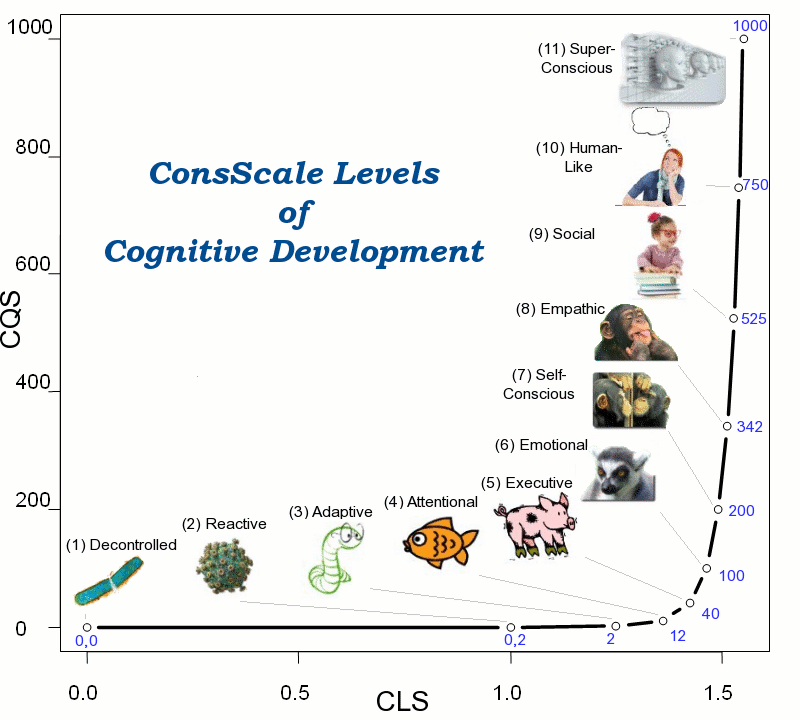


Conscious Robots Com Consscale A Machine Consciousness Scale



Ems Recap The Glasgow Coma Scale Ems World
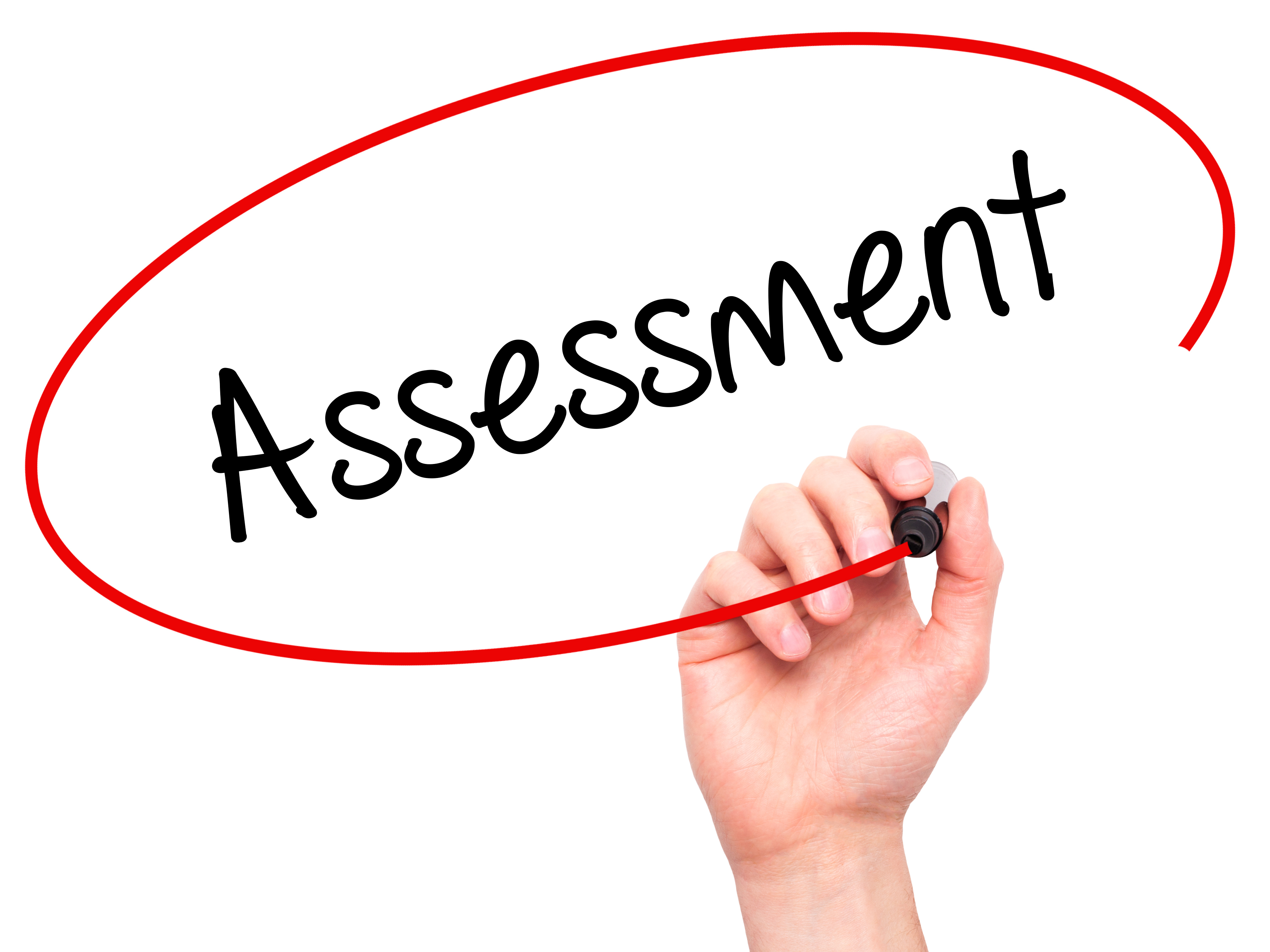


Consciousness Scottish Acquired Brain Injury Network E Learning



Levels Of Consciousness Awareness Psychology Coolguides



Neurological Assessment Ed Areyouprepared



Glasgow Coma Scale



Avramov S Scale To Assess The Level Of Consciousness 16 Download Table
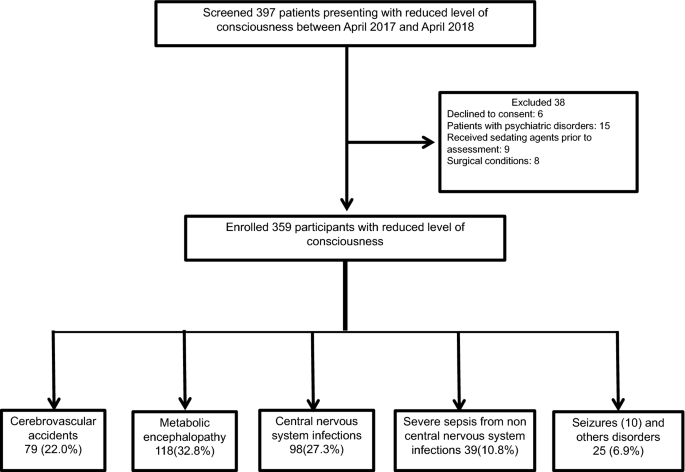


A Comparison Of The Full Outline Of Unresponsiveness Four And Glasgow Coma Scale Gcs Scores In Predicting Mortality Among Patients With Reduced Level Of Consciousness In Uganda Springerlink


8 9 10 11 12 13 14 15 16 17 18 19 21 22 23 24 25 26 27 28 29 30 31 32 33 34 35 36 37 38 39 40 41 42 43 44 45 46 47 48 49 50 51 52 53 54 Review Definitions Conscious Appearance Of Wakefulness Awareness Of The Self



The Consciousness Disorders Definitions And Clinical Assessment Neupsy Key



1 Neurological Assessment At The End Of This Self Study The Participant Will 1 Describe The Neuro Nursing Assessment 2 List 5 Abnormal Findings In A Neuro Ppt Download



Overview Of Physical Assessment Chapter 13 Pnu 145



Pdf Functional Neuroanatomy Mental Status Examination And Level Of Consciousness Level Of Consciousness Glasgow Coma Scale Mini Mental State Examination Assessment Of Sedation And Delirium In The Intensive Care Unit Cranial Nerve Examination
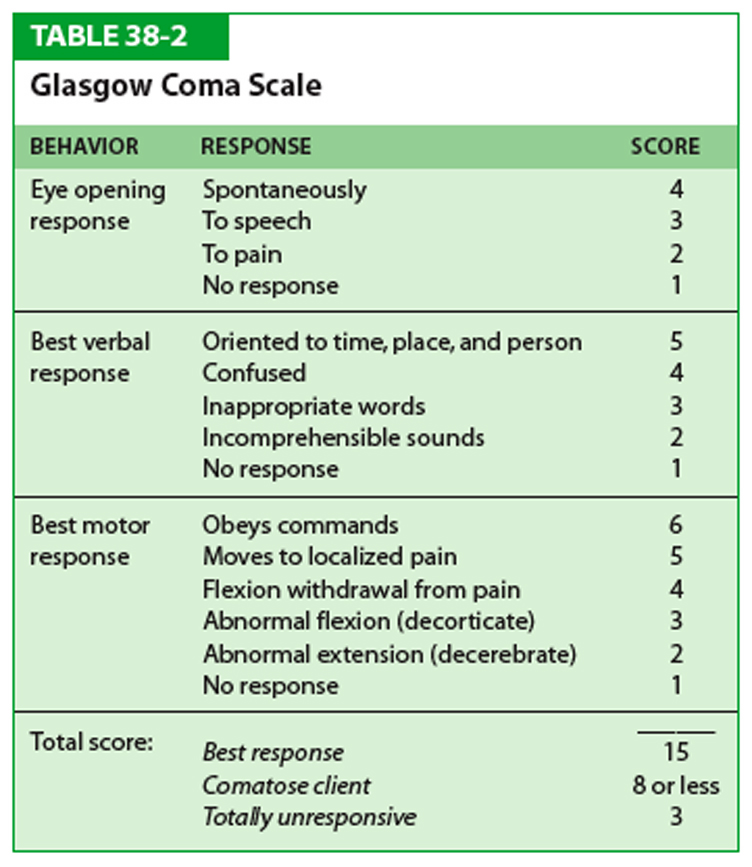


The Glasgow Coma Scale Gcs For First Aiders First Aid For Free



Assessment Nurse Key



Using The Glasgow Coma Scale



Seven Levels Of Consciousness Oncoreventures



Assessment Of Level Of Consciousness 2 Minute Emergency Medicine V Learning Youtube


Assessing The Level Of Consciousness Hku E Learning Platform In Clinical Neurosciences



Avramov S Scale To Assess The Level Of Consciousness 16 Download Table






Glasgow Coma Scale Glasgow Coma Scale Nursing School Prerequisites Nursing Assessment



0 件のコメント:
コメントを投稿